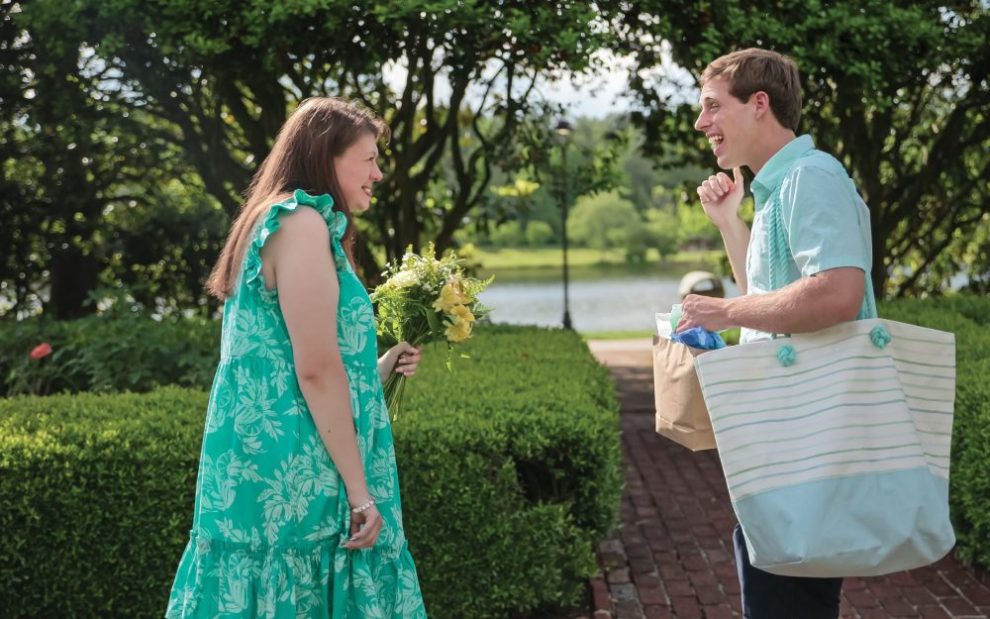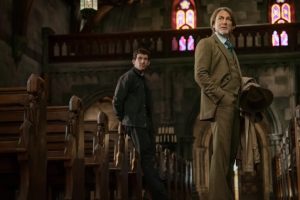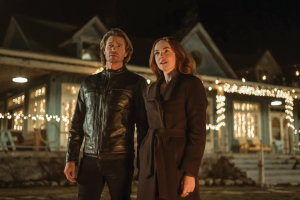“Everyone deserves to be loved.” This was the answer I received when I asked my students what they thought Jesus would say if he were asked, “What is your message for the world today?” One insightful student added, “Everyone deserves a second chance and everyone deserves to be loved.” This could easily serve as the subtitle for Netflix’s impressive reality series Love on the Spectrum, which follows a group of people on the autism spectrum as they search for love.
Despite 1 in every 31 children in the United States being diagnosed with autism spectrum disorder (according to the most recent CDC study), misconceptions and assumptions about autism remain widespread. Pari, a young woman from Boston featured in Love on the Spectrum, cleverly offers her own definition of autism: “It’s a different way of being.” She explains, “It’s like how there are different operating systems on computers—Mac, Windows, Linux. There’s no right or wrong, we just all have our own ways of thinking and operating.”
In fact, autism is a blanket term that encompasses a wide variety of characteristics, as another cast member, Abbey, says of herself and her boyfriend David. Abbey’s mind groups things together, “Good things with good things” and “bad things with bad things,” while David has synesthesia, a cognitive condition sometimes associated with autism that allows him to experience different senses simultaneously. As Abbey explains, “He sees colors as numbers.” Impressively, Abbey has learned to memorize the colors and their corresponding numbers to better connect with him.
Essential to any reality series about love are the people featured, and Love on the Spectrum has assembled a diverse group of autistic individuals. There’s Connor, who loves to pepper his dialogue with cultured and sometimes quirky quotations but also gets overwhelmed by new situations. Dani, who’s torn between the ideals she seeks and her desires. Adan, who is romantically drawn to Dani, especially for their shared love of animation, and who also wants to remain true to his Catholic faith. Tanner, who enjoys meeting new people and is learning to be comfortable with shared silence. And Abbey, who formed a connection with David over their mutual love of animals, especially lions, but struggles to communicate what’s going on inside her.
Most of the people featured in the series have never been on a date or had a romantic relationship. Just having a close friend outside of their family can be a challenge, as Connor’s mother laments that she simply wants him to receive a text message from someone who isn’t a family member. Trouble making friends, maintaining the back-and-forth of conversation, and seeing things from someone else’s perspective are common challenges for people on the autism spectrum, according to the National Institute of Mental Health. Yet, like anyone facing these challenges, it doesn’t mean there’s no desire for friendship or love. All of the people on Love on the Spectrum express a deep longing to share life with someone.
A powerful testament to this is portrayed through the work of autism expert Jennifer Cook. Diagnosed with autism herself, Cook offers counseling before and after the dates to help prepare and process experiences. Many of the people in the series share how they were bullied and treated unkindly in their youth. People familiar with the autism community know this can lead to “masking” (hiding one’s true self and trying to present as someone without autism), anxiety, and depression, among other things. Some of the best moments in the show feature Cook walking through social interactions and conversation skills in a way that’s tailored to each individual. It’s heartening to see Abbey or Madison grasp something that has long eluded them and inspiring to witness how open and vulnerable someone like Tanner can be in learning new things about himself and others.
This honest openness to self-knowledge, with the goal of building better relationships, not only makes the show stand out but also challenges viewers to reflect on how willing they are to learn how others perceive them and whether they’re open to change. How many neurotypical people work on basic conversation skills, ask open-ended questions, practice active listening, and stretch themselves to understand how others experience the world?
When Cook helps Tanner realize that, to build a relationship where both people feel happy and appreciated, he might need to talk a little less and create space for the other person to share, it raises the question of how many people could benefit from this simple yet profound insight—not only in their daily lives, but in their prayer lives as well.
One of the most beautiful scenes in the series comes at the end of season three, when Abbey writes a song for David to commemorate their third anniversary. The honesty and specificity of the lyrics make David gasp in wonder, placing his hands over his heart as she sings, “He sees colors as numbers, now I know them all, he learned how my mind works, we started to fall, we have so much in common, but at the same time, he can do his thing and I can do mine.” Their teary-eyed families look on, not only overjoyed by the love Abbey and David have found but in awe of all they’ve achieved together.
Humor and heartbreak are equally woven throughout the series, and not everyone finds love or lasting companionship. Yet all of them challenge themselves to overcome their fears and anxieties to embrace the hope of new relationships, often in an “unapologetically autistic” way, as Pari proudly declares. While there’s an increasing tendency today to speak on behalf of the autistic community, sometimes in diagnostic or demeaning ways, Love on the Spectrum creates a space for the autistic community to express themselves as they see fit.
From a Catholic perspective, this isn’t charity or goodwill—it’s the justice owed to each and every person made in God’s image and likeness.
This article also appears in the July 2025 issue of U.S. Catholic (Vol. 90, No. 7, pages 36-37). Click here to subscribe to the magazine.
Image: Netflix













Add comment